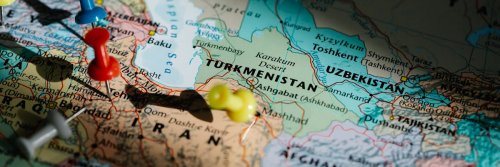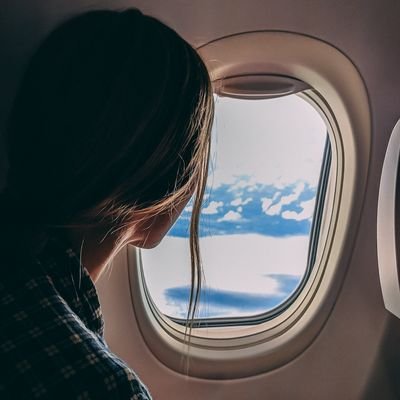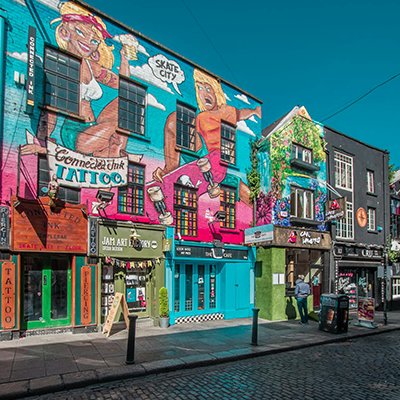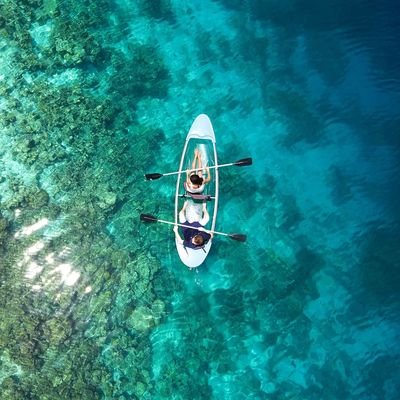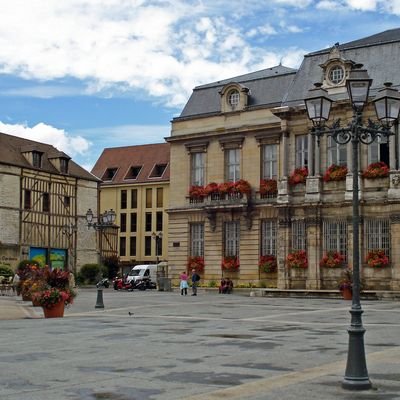If you plan to tour Uzbekistan, be prepared to gulp down lots of tea and gobble good luck bread, ‘lepioshka,’ with every meal. Both distinctive cultural idiosyncrasies from the days of the historical Silk Road era dating back centuries. Good luck bread was entrenched in daily life because of the nomadic lifestyle and the wealth and importance of grain cultivation in Central Asia—the bread was never placed upside down or put on the ground, believing that this would bring bad luck. While tea on the old Silk Road became a symbol of hospitality, especially when doing business—think huddles of smelly weather-beaten men haggling over prices in makeshift bazaars. As the availability of tea increased, it became a household item to drink at the start and finish of every meal. Guests are served tea in a traditional manner with 'respect'—the cup is given with the left hand while the right hand is placed over the heart. The complete ritual involves rinsing the cup slash bowl known as 'piala' three times, before the drinkable tea is poured. Only a third of the cup is filled to allow the tea to cool—it would be such bad manners if a guest should burn their tongue!
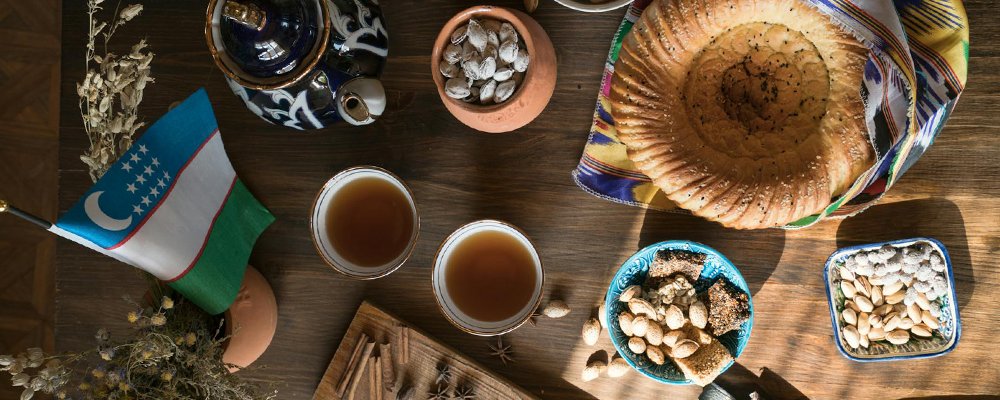
Once considered a luxury item, black tea was bundled along the ancient Silk Road on the backs of camels from China to India and Central Asia, heading in a westerly direction. It's believed that the tea trade began in the 2nd Century, allowing the mind to create the wonderful illusions of endless parades of colorful humanity with beasts of burden from mules to horses and, of course, camels, pounding the earth over treacherous tracks at a slow pace transporting what was then exotic goods such as silk, spices, nuts, and even jade as well as tea. In Uzbekistan, the towns of Bukhara, Fergana, and Samarkand became thriving hubs for the trade of tea and melting pots of languages and cultures.
Uzbekistan is often referred to as one of the 'Stans' which makes up Central Asia stretching from China to the Caspian Sea: Kazakhstan, Afghanistan, Pakistan, Kyrgyzstan, Tajikistan, and Turkmenistan. Formerly a part of the Soviet Republic, Uzbekistan has more than 4,000 monuments of significance and is famous for the fabric of its historical cities. A landlocked country bound on all sides by neighbors, it has a population of more than 32 million people—the most in Central Asia—where most people speak Uzbek and Russian as a second language because Russia ruled the country until it gained independence in 1991.
The cities of Uzbekistan are a showcase of the country’s long history of who has trodden over this amazing land:
Tashkent
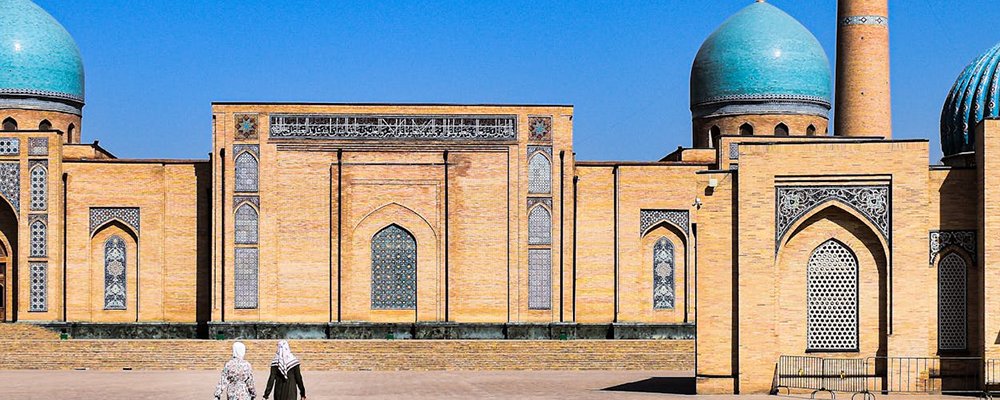
The capital of Uzbekistan, and usually where tourists fly into, is a cosmopolitan sprawl with stunning whispers of its past and dynamic streetscapes for modern city explorers. Museums and theaters sit side by side with international restaurants and nightlife venues.
The amazing green-domed Amir Timur Museum, which opened in 1996, is dedicated to the formidable Mongol leader Timur. An architectural wonder, it was influenced by the majesty of the Gur-e Amir mausoleum of Samarkand. Within its walls is an incredible display of priceless artifacts relating to Uzbekistan's history and the personalities of those who shaped it.
Samarkand
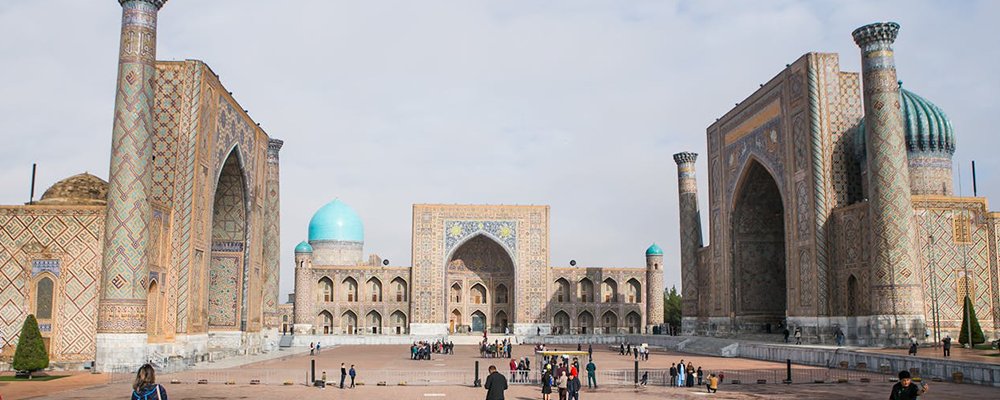
An ancient trade hub at a junction of the old Silk Road, Samarkand is known for its beautiful and colorful mausoleums and mosques. This vibrant city continued to throb with trade even after the railway line went through in 1888. It is a city for lovers of architecture with mindboggling remnants of its long history seen in beautiful buildings such as the UNESCO World Heritage-listed plaza of Registan, bordered by 3 stunning majolica-covered madrassas built in the 15th and 17th centuries. Timur, the last of the nomadic conquerors of the Eurasian Steppe and the founder of the Timurid Empire, left his mark with a towering tomb of mammoth proportions. Known as 'Timur the Lame' (he had a limp when walking due to being shot with arrows when stealing sheep as a teenager) was an experienced chess player who is credited with the game 'Tamerlane Chess' when double the number of pieces are used on a board of 110 squares. Another sight not to miss is the remains of Ulugbek's Observatory, which was constructed in 1420. Ulugbek is known more as an astronomer than a leader.
Bukhara
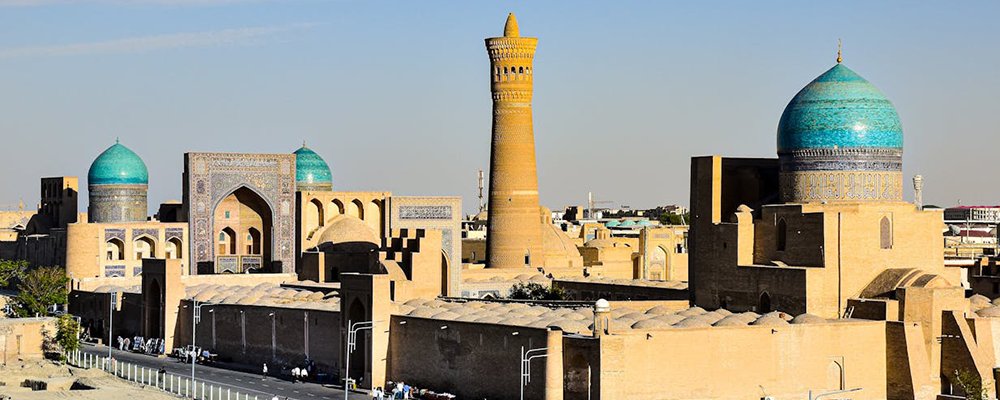
Even Genghis Khan was in awe of this city, so he could not destroy the achingly beautiful landmarks such as the Ark Fortress or the grand Kalyan Minaret smothered in exquisite tiles. An ancient Persian city, Bukhara's old town is UNESCO Heritage listed. You will hold your breath at the timeless grandeur and elegant details of the creations of centuries ago. More than two thousand years old, Bukhara is one of the most well-preserved examples of an urban streetscape from the 10th to the 17th centuries. It once bustled as an economic powerhouse and a hive of Islamic culture. Craft workshops, minarets, mosques, and local restaurants dot streets, while the Labi Hovuz, an artificial pool, sits in a central square where tourists and locals alike take time out for tea, ice cream, or to have fun bargaining with souvenir vendors.
Other cities not to be ignored include Rishtan, known for its pottery and ceramic artists; Margilan, known for its traditional 'ikat' fabric; Khiva, home to an incredible fortress, and the regional capital of Nukus, where art lovers can find a massive collection of Russian avant-garde art from the Soviet era at the Savitsky Museum.
Gail Palethorpe, a self proclaimed Australian gypsy, is a freelance writer, photographer and eternal traveller. Check out her website Gail Palethorpe Photography and her Shutterstock profile.

